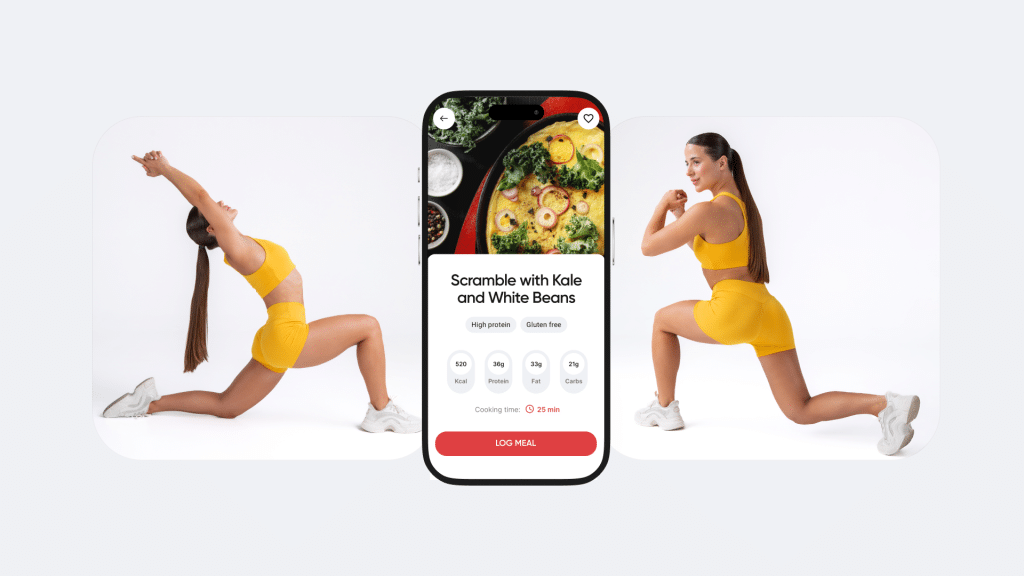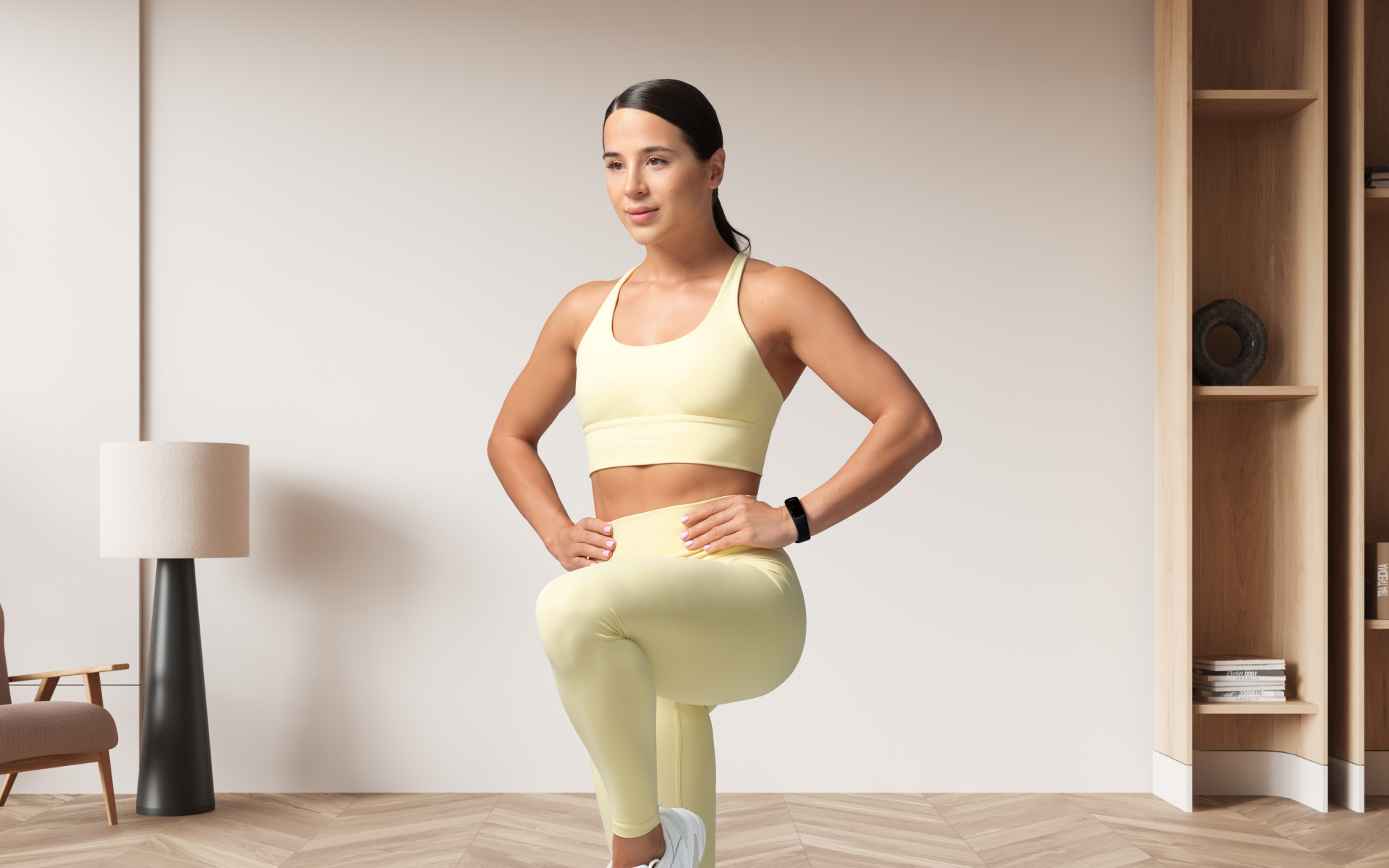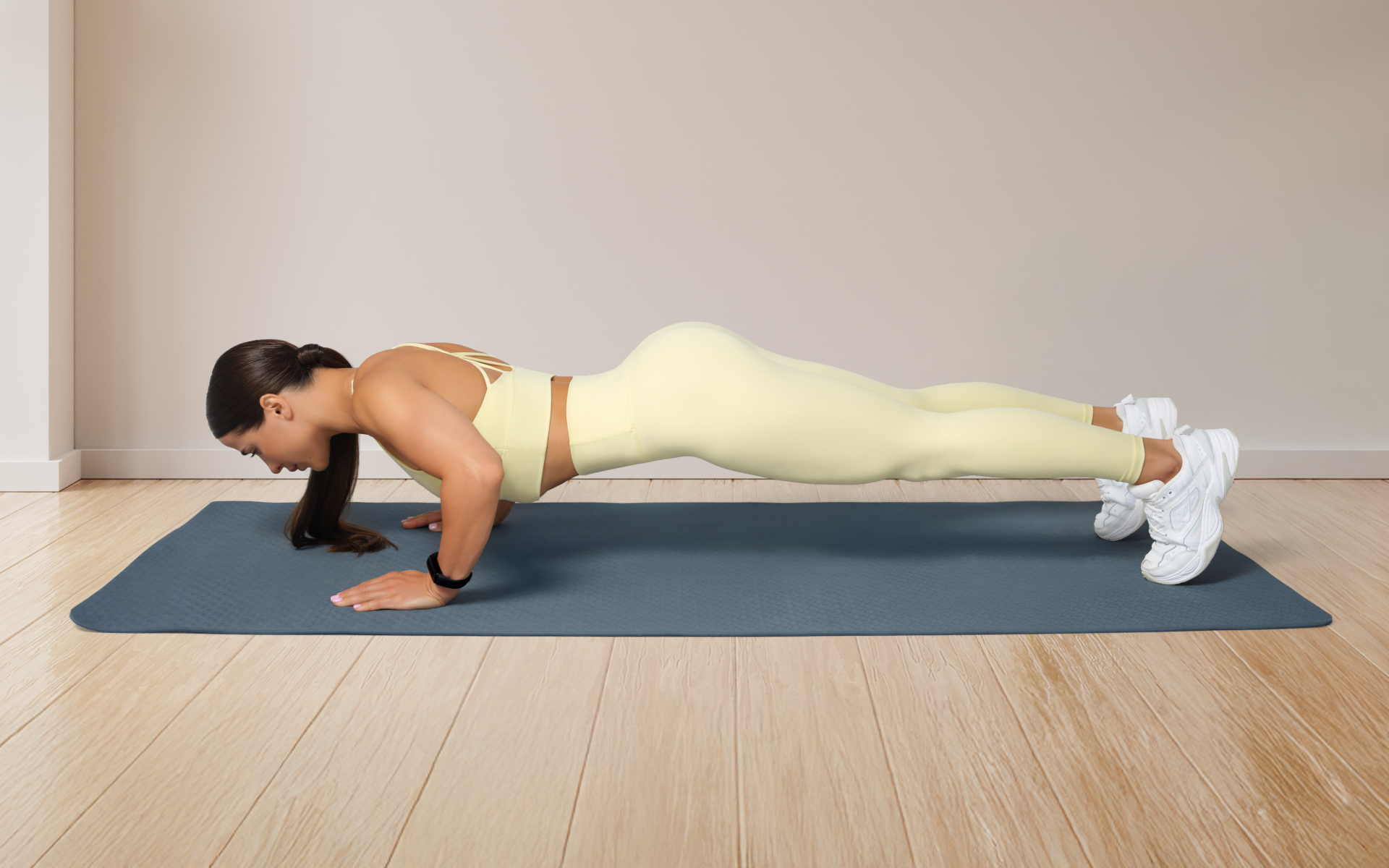We’ve all been there – feeling unmotivated to exercise and dreading the thought of going to the gym. Or maybe we’re just not seeing the results we want and are losing interest in our fitness routine. Whatever the reason may be, it can be challenging to maintain a consistent exercise regimen.
There’s a reason why we feel this way. Our brains are wired to seek pleasure and avoid pain. And let’s face it, for many of us, exercise can feel like a chore and be associated with pain or discomfort.
But what if we were to tell you that there’s a way you can make exercise more enjoyable? That you could actually find pleasure in working out and look forward to it?
Gamification is the use of game elements, such as competition, rewards, and challenges, to make a task or activity more engaging and enjoyable. It’s essentially turning something mundane into a game.
Here’s what you need to know about gamifying your exercise routine:
What Does it Mean to Gamify Your Exercise Routine?
Gamifying your exercise routine means incorporating game-like elements such as competition, rewards, and challenges into your workouts The idea is to make exercise more enjoyable by tapping into your natural desire for pleasure and satisfaction (1). This is incredibly useful for people who are extrinsically motivated, which means that they’re encouraged by external validation (such as rewards) in exchange for their efforts.
The concept of gamification has been applied to various areas, such as education, business, and health.
A popular example of gamification in health is fitness tracking apps and devices, which use points, badges, and challenges to motivate users to stay active and reach their goals.
Another example is exercise classes that have a competitive aspect, such as spin classes where participants can see their performance on a leaderboard or compete against each other for the highest score. This type of reward system encourages participants to work harder as their efforts are showcased to others and hard work will likely be reinforced with higher rankings. This is known as positive reinforcement, which often plays a big role in gamified exercise routines.
Why Gamifying Exercise Works
Gamifying exercise is highly effective as it leverages the brain’s natural reward pathways. When you achieve a goal or complete a task, your brain releases dopamine, the feel-good chemical that reinforces positive behavior (1).
By incorporating small, achievable goals and rewarding yourself for reaching them, exercise can start to feel less like a chore and more like a rewarding experience. This cycle of positive reinforcement helps you stay motivated and committed to your fitness routines.
Gamified exercise offers a variety of psychological and physical benefits, such as:
- Enhanced motivation by creating a sense of fun and excitement during workouts.
- Improved consistency through goal setting and achievement tracking.
- Increased social connections through competition and community challenges.
- Boosted engagement due to immediate feedback and offered rewards.
- Increased adherence to fitness goals as a result of positive reinforcement being offered.
- Growth as a result of setting progressively challenging tasks that encourage continued improvement.
BetterMe will keep you laser-focused on your weight loss journey! Nutrient-packed meal plans, fat-blasting workouts, galvanizing challenges and much more. Try using the app and see for yourself!
What Are the Benefits of Gamifying Exercise?
Gamifying exercise can transform the way you approach fitness and well-being.
It Makes Workouts Fun and Engaging
First and foremost, it makes workouts more enjoyable, turning them into an immersive experience that’s as fun as it is rewarding. You’re more likely to have a healthy relationship with exercise when it’s something you look forward to rather than something you dread as it feels more like a reward than a punishment (2).
It Motivates You to Push Harder
With gamification, you have a clear goal in mind and can track your progress as you work toward it. The closer you get to your goal or the more goals you reach, the more motivated you become and the more likely you will be to continue to seek out the same feeling of accomplishment. By incorporating game-like elements, people often find themselves exercising for longer and with greater intensity, which can lead to significant fitness improvements and better health outcomes (3). Our previous post goes into great detail about staying on track.
It Promotes Consistency
When exercise feels like a game, it’s easier to stay consistent with your routine as you feel as if you’re being rewarded for your hard work. By setting small, achievable goals and providing immediate feedback and rewards, gamification keeps you on track toward your goals (3). This is particularly true if poor performance or lack of performance results in things being taken away, such as status on a leaderboard or the ability to achieve scores you previously had.
It Breaks the Monotony
Gamification can help break the monotony of traditional workouts by introducing variety and new challenges that keep participants engaged. Rather than doing the same routine every day, gamification allows you to mix things up and continuously challenge yourself.
It Fosters a Supportive Community
Many gamified exercise programs include social elements such as community challenges or leaderboards.
The social component, whether through friendly competitions or supportive communities, can lead to new friendships and a sense of camaraderie, which enhances the emotional benefits of exercise alongside the physical ones.
Read more: Ways To Exercise At Home: Going Full Throttle On Your Body Transformation Plans
How to Gamify Your Workouts
Here’s a step-by-step guide to help you gamify your exercise routine:
Step 1: Set Clear Goals
Start by defining what you want to achieve with your workouts. Whether it’s running a certain distance, lifting a specific weight, or mastering a yoga pose, having clear goals provides direction and focus. Break these goals into smaller, manageable milestones to create a sense of progression and achievement.
Step 2: Use Fitness Apps and Wearables
Technology is your friend when it comes to gamifying workouts. There are numerous fitness apps and wearable devices that can track your progress, provide feedback, and offer rewards. Apps such as BetterMe, Zombies, Run! or Fitbit turn running and daily activities into interactive games. Choose one that is aligned with your fitness goals and personal preferences.
Step 3: Incorporate Challenges and Rewards
Introduce challenges into your routine to keep things exciting. This could be as simple as increasing your reps each week or trying a new workout style.
Reward yourself when you achieve these challenges. Rewards can be anything from treating yourself to a new workout outfit to enjoying a day off for relaxation. This system of challenges and rewards taps into your natural desire for accomplishment and gratification thanks to the dopamine hit these things tend to provide. If you’re curious about workout challenges, check out our earlier article.
Step 4: Engage in Social Competitions
Social interaction can significantly boost motivation. Join a fitness group, participate in challenges on apps such as Strava, or simply compete with a friend. These social elements add a layer of accountability and fun as you strive to outperform others or meet communal goals.
Step 5: Track Progress and Celebrate Achievements
Consistently track your progress to see how far you’ve come. Whether through an app, a journal, or a spreadsheet, documenting your achievements helps maintain motivation. Celebrate every milestone, no matter how small. Recognizing your progress reinforces positive behavior and encourages continued effort.
Applying Gamification to Different Workouts
- Running: Use apps that offer virtual races or story-driven runs. Set distance or speed goals, and reward yourself for personal bests.
- Strength Training: Create challenges based on reps, sets, or weight lifted. Use apps that track your gains and provide badges for milestones.
- Yoga: Set goals for mastering new poses or improving flexibility. Participate in virtual yoga challenges and reward yourself for consistency.
- Group Fitness Classes: Create friendly competitions with classmates, or use apps that offer workouts based on levels and progression.
Challenges and Limitations of Gamifying Exercise
While gamification has numerous benefits, it’s important to acknowledge its limitations and potential challenges. These include:
- Cost: Some apps and fitness wearables can be expensive, which makes them inaccessible for some individuals.
- Technology Reliance: Relying too heavily on technology can make it challenging to work out without these devices or apps.
- Burnout: Constantly striving for rewards and achievements can lead to burnout and a negative relationship with exercise.
- One-size-fits-all approach: Not all gamified programs may suit your personal preferences or fitness goals.
- Lack of sustainability: Gamification may not be a long-term solution for maintaining motivation and consistency in exercise.
- Lack of physical guidance: Some gamified workouts may not provide proper form and technique guidance, leading to potential injury.
Here are some tips that can help you overcome the challenges listed above:
Manage Costs Wisely
Not all fitness apps and wearables are budget-friendly, but don’t worry, there are ways around this. Look for free versions of popular apps that offer basic features at no cost. These can be just as effective for certain goals.
Consider sharing subscriptions or splitting costs with friends, so everyone can benefit without breaking the bank. Also, take advantage of free trial periods to test multiple apps and decide which one meets your needs.
Balance Tech Dependency
While tech can be incredibly helpful, try mixing up your routine with tech-free workouts to build a self-sufficient exercise habit. Use your phone or wearable as a tool, not a crutch.
Incorporate workouts that emphasize feeling and intuition, such as yoga or tai chi, which can help you connect more deeply with your body without relying on gadgets. Remember, the goal is to enjoy exercise while listening to what your body needs.
Prevent Burnout with Variety
To avoid burnout, diversify your workouts and set realistic goals. A mix of activities such as running, swimming, and strength training can keep things fresh and exciting (4).
Don’t forget about rest days! They’re essential for recovery and maintaining morale. Celebrate small wins with non-exercise-related rewards to maintain joy and motivation without putting too much pressure on performance.
Personalize Your Gamification Approach
Customizing your approach is key. Choose elements that genuinely excite you, whether it’s virtual races, strength challenges, or yoga milestones. Tailor gamified features to your preferences and lifestyle, not the other way around.
Consider mixed approaches, such as combining social competition with personal challenges, to keep things engaging. Remember, there’s no one-size-fits-all in fitness. Your unique mix will keep you motivated for longer.
Sustainable Gamification Strategies
Ensure your gamification efforts are sustainable by focusing on long-term goals and gradually introducing new challenges. Start small and as your confidence grows, increase the stakes. This helps prevent feelings of overwhelm. Revisit your goals periodically to align them with evolving interests or fitness levels. Celebrate progress often, no matter how small, to reinforce a long-term commitment mindset.
Prioritize Proper Form and Safety
No matter how fun gamification can be, always prioritize safety. If a gamified workout lacks form guidance, consider supplementing it with online tutorials or instructional videos from accredited trainers.
Take time to learn correct techniques and don’t rush through your routine, even when you’re chasing rewards. A solid foundation in proper form leads to more effective workouts and reduces the risk of injury (5).
BetterMe is your fast-track ticket to long-lasting weight loss! Tailor your fitness journey and maximize your results with just a couple of swipes!
Frequently Asked Questions
Can gamifying exercise help me stay consistent?
Gamifying exercises can significantly enhance consistency in your fitness routine by making workouts more engaging and rewarding (3). Here’s how:
- Increased Motivation: Gamification taps into intrinsic motivation by making workouts fun and rewarding. Achieving milestones and earning rewards can keep you eager to continue thanks to the sense of pride you may feel.
- Goal Setting and Achievement: Setting small, achievable goals and celebrating each success can provide a sense of accomplishment, which will encourage you to stick with your routine.
- Social Accountability: Participating in social challenges or group activities can hold you accountable, as you work toward goals alongside others or compete in friendly competitions.
- Variety and Fun: Introducing game-like elements can break the monotony of traditional workouts, making each session unique and exciting, which can help maintain interest over time.
How can I start gamifying my workouts?
Starting to gamify exercises can be simple and enjoyable. Here are some practical steps to get you going:
- Set Specific Goals: Clearly define what you want to achieve. Break these goals down into smaller milestones to make progress manageable and trackable.
- Choose the Right Apps and Tools: Use apps such as MyFitnessPal, Fitbit, or Strava that gamify aspects of fitness through points, badges, or leaderboards. These tools provide instant feedback and rewards.
- Incorporate Challenges: Create personal or group challenges such as a certain number of steps per day or a weekly workout streak. Set up rewards for completing these challenges.
- Engage Friends and Community: Invite friends to join you in challenges or become part of an online fitness community. Competing with or getting support from others can enhance motivation.
- Track and Celebrate Progress: Consistently monitor your achievements and celebrate milestones, whether through a personal journal or shared achievements in an app.
Is gamified exercise suitable for all fitness levels?
Gamified exercise is versatile and can be adapted to suit any fitness level. Here’s how it can work for everyone:
- Beginners: Start with simple, achievable goals such as daily steps or introductory workout routines. Use basic apps that reward consistency and completion of tasks.
- Intermediate Users: Set more challenging goals such as increasing workout intensity or duration. Use apps that offer varied challenges and track improvements over time.
- Advanced Users: Focus on specific performance goals, such as personal bests in running or strength training. Use advanced features in apps that target detailed metrics and offer competitive leaderboards.
By tailoring gamification to your fitness level, you can ensure it remains challenging yet achievable, providing the right amount of motivation and satisfaction.
Final Thoughts
Gamifying exercise can revolutionize the way you approach fitness. By incorporating elements of play, rewards, and social interaction, it transforms workouts from a dreaded chore into an enjoyable experience.
It can motivate you to push harder, promote consistency, break up monotony, foster a supportive community, and celebrate your achievements. Whether you’re looking to improve your overall health or reach specific fitness goals, gamification can help make exercise fun and rewarding.
DISCLAIMER:
This article is intended for general informational purposes only and does not serve to address individual circumstances. It is not a substitute for professional advice or help and should not be relied on for making any kind of decision-making. Any action taken as a direct or indirect result of the information in this article is entirely at your own risk and is your sole responsibility.
BetterMe, its content staff, and its medical advisors accept no responsibility for inaccuracies, errors, misstatements, inconsistencies, or omissions and specifically disclaim any liability, loss or risk, personal, professional or otherwise, which may be incurred as a consequence, directly or indirectly, of the use and/or application of any content.
You should always seek the advice of your physician or other qualified health provider with any questions you may have regarding a medical condition or your specific situation. Never disregard professional medical advice or delay seeking it because of BetterMe content. If you suspect or think you may have a medical emergency, call your doctor.
SOURCES:
- How Gamification Affects Physical Activity: Large-scale Analysis of Walking Challenges in a Mobile Application (2017,nih.gov)
- The Relationship between Gamified Physical Exercise and Mental Health in Adolescence: An Example of Open Innovation in Gamified Learning (2024,nih.gov)
- Evaluating the Effectiveness of Gamification on Physical Activity: Systematic Review and Meta-analysis of Randomized Controlled Trials (2022,nih.gov)
- The benefits of adding cross training to your exercise routine (2018,msu.edu)
- Prevent Injuries with Proper Form During Workouts (2021,nus.edu.sg)











